What is On-Page SEO and why is it important?
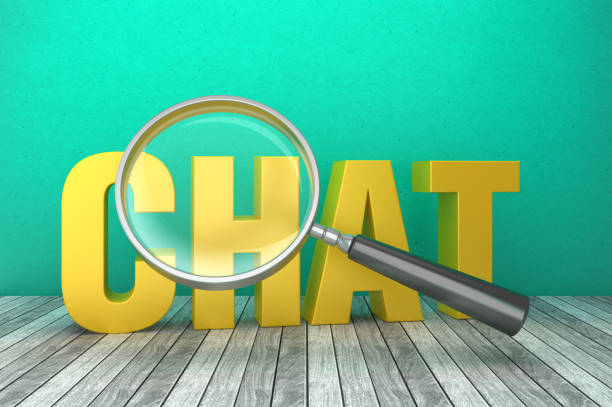
#On_Page_SEO (On-Page SEO) refers to a set of techniques and actions you perform within your website to improve its ranking in Google search results and other search engines.
These actions include optimizing content, site structure, title tags, meta descriptions, images, and other page elements.
The importance of On-Page SEO stems from the fact that search engines use these factors to better understand page content and its relevance to search queries.
The stronger your website’s On-Page SEO, the better search engines can understand your content, and consequently, your site’s ranking in search results will increase.
In fact, On-Page SEO is the foundation of any successful SEO strategy, and without it, your efforts in Off-Page SEO will not achieve the desired results.
Moz is a reputable resource for more information in this area.
On-Page SEO helps you provide a better user experience for your website visitors.
A website with a proper structure, high-quality content, and fast loading speed will be more attractive to users, increasing their likelihood of returning to your site.
This not only helps improve your site’s ranking but also increases conversion rates and sales. Improving On-Page SEO is an ongoing process that requires continuous analysis and review.
By continuously monitoring and optimizing various On-Page SEO elements, you can ensure that your website is always in the best condition and well-visible in search results.
Does your company’s website create a professional and lasting first impression on potential customers? Rasawb, with its professional corporate website design, not only reflects your brand’s credibility but also opens a path for your business growth.
✅ Build a powerful and reliable brand image
✅ Attract target customers and increase sales
⚡ Get free consultation
Keyword Research – The Cornerstone of On-Page SEO

Keyword Research is the process of finding words and phrases that users enter into search engines to find the information, products, or services they need.
This process is the first and most important step in any SEO strategy, especially On-Page SEO.
Choosing the right keywords helps you create content based on the needs and interests of your target audience, thereby attracting more organic traffic to your site.
Many tools are available for keyword research, including Ahrefs, SEMrush, Google Keyword Planner, and Ubersuggest.
Each of these tools has its own features and capabilities, but they all help you find keywords related to your business, check their search volume, assess competition, and find alternative and related keywords.
For example, if you own an online clothing store, you can use these tools to find keywords like “women’s clothing purchase”, “new manteau”, “men’s t-shirt price”, and so on.
After finding suitable keywords, you should use them strategically in your content.
This means naturally and relevantly using keywords in your page title, meta description, subheadings, main text, and images.
Avoid overusing keywords, as this can lead to your site being penalized by search engines.
Your primary goal should be to provide high-quality and valuable content for users, not just to optimize for search engines.
On-Page SEO begins with strong keyword research.
Optimizing Title and Meta Descriptions – The First Impression

The Title Tag and Meta Description are two important elements in On-Page SEO that are displayed in search results and make the first impression on the user.
The page title is the main title of the page that appears in the browser tab and also on the search engine results page (SERP).
The meta description is a short summary of the page’s content that appears below the title on the search results page.
Optimizing the title and meta description means writing them in a way that is both appealing to users and understandable to search engines.
The title should contain the main keyword of the page and briefly and accurately describe the page’s content.
The meta description should also provide a summary of the page’s content and encourage users to click on your link.
The appropriate length for a title is around 50-60 characters, and for a meta description, it is around 150-160 characters.
Choosing appropriate keywords for the title and meta description is very important.
Try to use keywords that have high search volume and are relevant to the page content.
Also, do not overlook long-tail keywords, as these usually have less competition and can attract more targeted traffic to your site.
On-Page SEO, by optimizing titles and meta descriptions, can increase the click-through rate.
| Element | Description | Best Practice |
|---|---|---|
| Title Tag | Main page title in search results | Contains main keyword, concise and appealing, 50-60 characters long |
| Meta Description | Short summary of page content in search results | Summary of content, enticing to click, 150-160 characters long |
Optimizing Page Content – Content is King
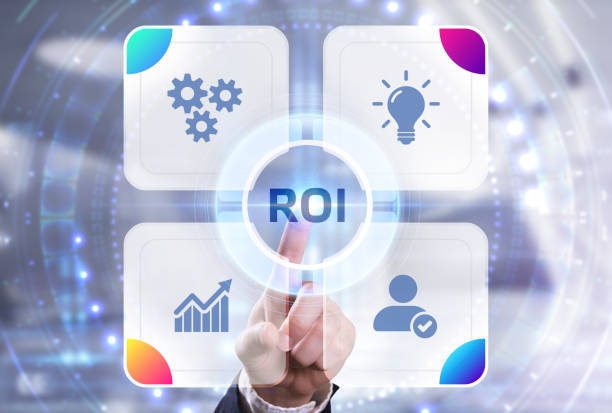
Content is king! This famous phrase perfectly illustrates the importance of content in SEO.
High-quality and valuable content is not only appealing to users but also highly important for search engines.
Search engines consider quality content as one of the main ranking factors.
Optimizing page content involves creating original, comprehensive, accurate content relevant to target keywords.
To optimize page content, you must first understand the needs and interests of your target audience.
Your content should answer their questions and needs, and provide useful information.
Use your target keywords naturally and relevantly in your content, but avoid overusing them.
Also, use images, videos, and other multimedia elements to make your content more engaging.
The structure of the page content is also very important.
Use subheadings (H2, H3, etc.) to organize your content and divide it into smaller sections.
Use short, readable paragraphs and avoid complex, lengthy sentences.
Also, use internal and external links to connect your content with other pages on your site and other reputable sources.
On-Page SEO, by producing quality content, can improve site ranking.
Did you know that 94% of a company’s first impression relates to its website design?
Rasawb, by providing professional corporate website design services, helps you create the best first impression.
✅ Create a professional and reliable image of your brand
✅ Easier attraction of potential customers and improved online presence
⚡ Get free corporate website design consultation
Image Optimization – Visible and Optimized
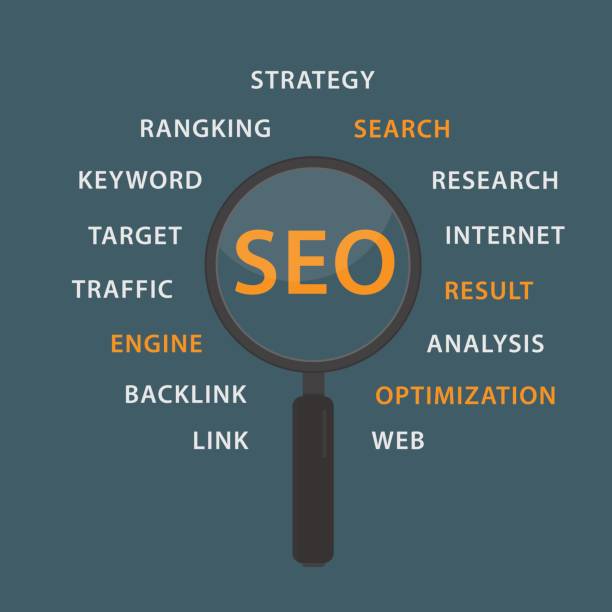
Images play a significant role in the appeal and better understanding of page content.
However, if images are not properly optimized, they can slow down page loading speed and negatively impact site SEO.
Image optimization includes reducing image size, choosing the right format, using appropriate file names, and writing suitable alternative text (Alt Text).
Image size directly impacts page loading speed.
The larger the image size, the longer the page loading time, which can lead to reduced user satisfaction and increased bounce rate.
To reduce image size, you can use image compression tools like TinyPNG or ImageOptim.
Also, the appropriate format for web images is JPEG for images with many colors and PNG for images with fewer colors and transparency.
Image file names should also be relevant to the image content and contain target keywords.
For example, if you have an image of a manteau, rename its file to “new-women’s-manteau.jpg”.
The alternative text (Alt Text) should also be descriptive of the image and contain the target keyword.
Alt text helps search engines understand the image content and is displayed to the user if the image fails to load.
On-Page SEO, by optimizing images, can increase site speed.
Proper URL Structure – Readable and Expressive
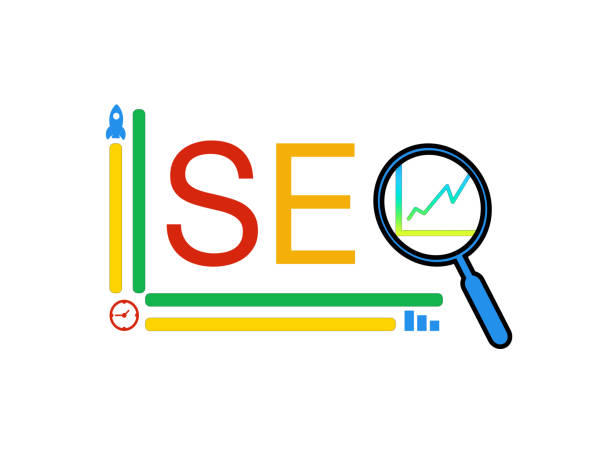
The URL structure (page address) is also one of the important factors in On-Page SEO.
A proper URL should be short, readable, expressive, and contain the target keyword.
The URL should be such that both users and search engines can easily identify the page’s content from it.
Avoid using long, complex URLs containing unclear characters.
The best method for creating a proper URL is to use target keywords and separate them with hyphens (-).
For example, if you have a page about “On-Page SEO training”, change its URL to “example.com/onpage-seo-training”.
Avoid using numbers, symbols, and uppercase letters in your URL.
Also, try to organize your site’s URLs hierarchically, so that the URL structure reflects your site’s structure.
Short and readable URLs are not only beneficial for SEO but also important for user experience.
Users remember short URLs more easily and can share them with others effortlessly.
On-Page SEO, with a proper URL structure, can improve user experience.
Internal Linking – Connecting Pages

Internal Linking is the process of creating links between different pages of your website.
Internal linking helps search engines better understand your site’s structure, identify more important pages, and distribute ranking value among different pages.
Additionally, internal linking helps users easily navigate your site and access the information they need.
For effective internal linking, you should create links strategically and relevantly.
Links should be created from pages to other pages that have relevant content and are useful to users.
Use appropriate anchor text for links.
Anchor text is the text that links to another page and should contain target keywords.
Avoid using generic anchor text like “click here” and instead use descriptive and relevant anchor text.
| Internal Link Type | Description | Example |
|---|---|---|
| Navigation Link | Links located in the site’s menu or sidebar | Link to “About Us” or “Contact Us” page |
| Contextual Link | Links embedded within the page’s content text | Link to a related article on Off-Page SEO |
| Footer Link | Links located at the bottom of the site’s page | Link to “Privacy Policy” or “Terms of Use” |
The number of internal links on each page should also be balanced.
Avoid creating too many links on a single page, as this can reduce the ranking value of each link.
On-Page SEO, with proper internal linking, can improve site structure.
Page Loading Speed – Fast and Responsive

Page Loading Speed is one of the important factors in SEO and user experience.
Users expect web pages to load within a few seconds.
If page loading takes too long, users get frustrated and leave the site.
This can lead to an increased bounce rate and a lower site ranking in search results.
Google considers page loading speed as one of its ranking factors.
To improve page loading speed, you can take various actions.
These actions include reducing image size, using a CDN (Content Delivery Network), enabling Gzip compression, optimizing code, and using caching.
You can also use website speed testing tools like Google PageSpeed Insights or GTmetrix to identify your site’s speed issues.
Page loading speed has a direct impact on user experience.
A fast and responsive website is more appealing to users, increasing their likelihood of returning to your site.
On-Page SEO, by improving site speed, can enhance user experience.
Does your company’s website create a professional and lasting first impression on potential customers? Rasawb, with its professional corporate website design, not only reflects your brand’s credibility but also opens a path for your business growth.
✅ Build a powerful and reliable brand image
✅ Attract target customers and increase sales
⚡ Get free consultation
Mobile Optimization – Mobile-Friendly
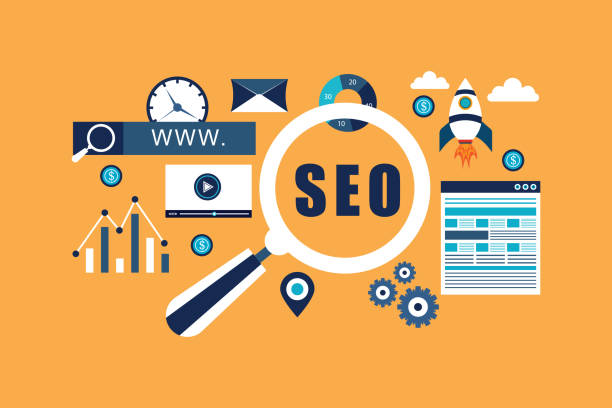
Today, most users access the internet via mobile devices.
For this reason, Mobile Optimization has become extremely important.
A mobile-optimized website should display correctly on mobile devices, have fast loading speed, and be designed for touch interaction.
Google considers mobile optimization as one of its ranking factors, and websites that are not mobile-optimized may rank lower in mobile search results.
To optimize for mobile, you can use Responsive Design.
Responsive design allows your website to automatically adapt to the screen size of various devices.
Additionally, you can use AMP (Accelerated Mobile Pages) to increase the loading speed of your pages on mobile.
On-Page SEO, by optimizing for mobile, can increase site ranking in mobile searches.
On-Page SEO is very important.
Fixing Website Errors – Cleanup and Improvement

Website Errors can negatively impact SEO and user experience.
Errors such as 404 errors (page not found), 500 errors (server error), and redirect errors can lead to a lower site ranking in search results and user dissatisfaction.
Fixing website errors involves identifying and resolving these errors.
To identify website errors, you can use tools like Google Search Console or Screaming Frog.
These tools help you identify 404 errors, 500 errors, redirect errors, broken links, and other issues on your site.
After identifying errors, you should fix them as soon as possible.
You can fix 404 errors by creating 301 redirects to other relevant pages.
500 errors should be fixed by checking and resolving server issues.
And redirect errors should be fixed by checking and correcting incorrect redirects.
In summary, #On_Page_SEO is an ongoing process that requires continuous effort and follow-up.
By taking these actions, you can improve your site’s ranking in search results, attract more organic traffic to your site, and provide a better user experience for your website visitors.
On-Page SEO, by fixing website errors, can ensure site health.
Frequently Asked Questions
| Question | Answer |
|---|---|
| What is On-Page SEO? | On-Page SEO involves optimizing elements that are directly under your control and within your website. Its goal is to help search engines better understand page content and improve its ranking. |
| Why is On-Page SEO important? | On-Page SEO gives clear signals to search engines about the page content, improves user experience, and increases the chance of attracting organic traffic. |
| What are the most important On-Page SEO factors? | Keywords, Title Tag, Meta Description, URL structure, quality content, image optimization, and internal links are among the most important factors. |
| What is the role of the Title Tag in On-Page SEO? | The title tag is one of the most important signals for search engines and users that defines the main topic of the page. It should include the main keyword and be appealing. |
| How important is the Meta Description? | The meta description does not directly affect ranking, but by encouraging users to click, it can improve the click-through rate (CTR). |
| How to optimize images for On-Page SEO? | By using descriptive file names, appropriate Alt Text containing keywords, compression to reduce size, and correct dimensions. |
| What effect do Internal Links have on SEO? | Internal links help search engines discover and index site pages, distribute authority (PageRank) throughout the site, and improve user navigation. |
| Is page loading speed an On-Page SEO factor? | Yes, page loading speed is a crucial factor in On-Page SEO and user experience. Slower pages can lead to higher bounce rates and lower rankings. |
| What characteristics does quality content have for On-Page SEO? | Quality content should be comprehensive, unique, relevant, trustworthy, readable, and fully answer users’ needs and questions. |
| How can keywords be used in content? | Keywords should be used naturally in the title, subheadings, first paragraph, body text, and image alt text. Avoid keyword stuffing. |
And other advertising agency services by Rasa Web in advertising:
- Smart Direct Marketing: An innovative platform to improve SEO ranking with marketing automation.
- Smart Marketing Automation: A combination of creativity and technology for digital branding through intelligent data analysis.
- Smart Link Building: A dedicated service for growing user engagement based on key page optimization.
- Smart Google Ads: Professional optimization for campaign management using SEO-driven content strategy.
- Smart Sales Automation: Professional optimization to increase sales using engaging user interface design.
And over a hundred other services in internet advertising, advertising consultation, and organizational solutions.
Internet Advertising | Advertising Strategy | Advertorials
Sources
What is On-Page SEO? (Virgool)
On-Page SEO Techniques (IranHost)
On-Page SEO Checklist (RankP)
Importance of On-Page SEO (SEOedu)
? To soar in the digital world and reach more customers, “Rasawb Afarin” is by your side with comprehensive digital marketing services, including multilingual website design. Get professionally noticed with us!
📍 Tehran, Mirdamad Street, Next to Central Bank, Kazeroon South Alley, Ramin Alley No. 6


